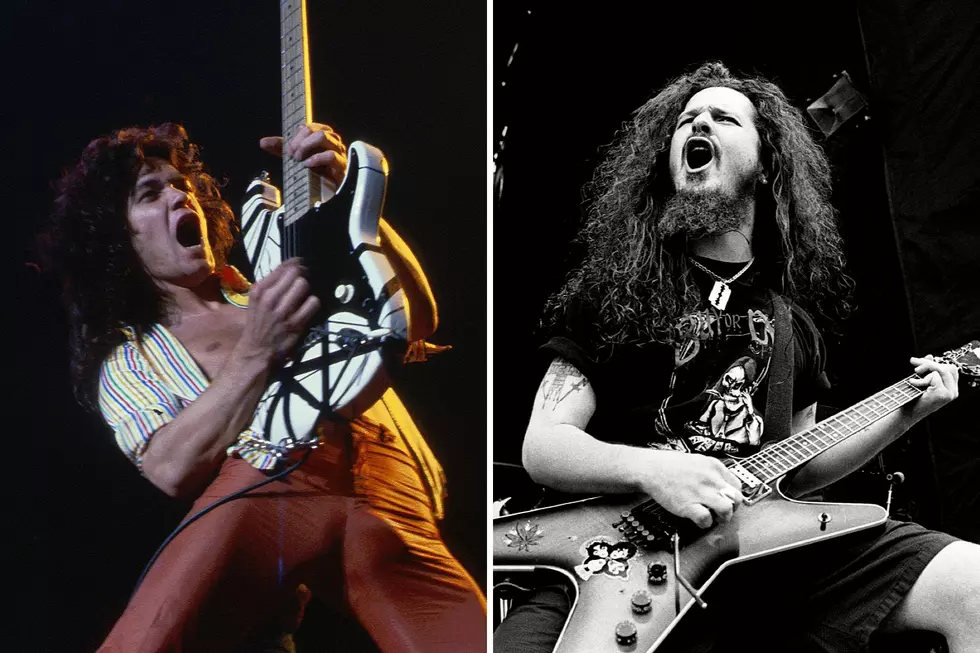
What Makes a Guitarist Iconic? With Guitar-Maker Dean Zelinsky
Whether you are an accomplished player, three-chord strummer or have never picked up a guitar in your life, you may well have wondered, like us, what it is that supplies that indefinable X-factor that makes a truly great guitarist stand out.
If there’s one person who can answer that question, it’s legendary guitar maker Dean Zelinsky.
Dean started fixing guitars in his early teens and opened his first shop while still at high school. His now-famous company, Dean Guitars, opened in 1977 (he later sold that company and now owns Dean Zelinsky Guitars). Since then he has supplied his expert knowledge and ground-breaking instruments to a who’s-who of rock royalty, including “Dimebag” Darrell Abbott (Pantera), Billy Gibbons (ZZ Top), Trent Reznor (Nine Inch Nails) and many others.
In doing so, Dean has pushed the limits of design and technology to astonishing heights.
Let’s start with the big one: What, in your opinion, makes a guitarist "iconic"?
Dean Zelinsky: The real answer is songs!
Eddie Van Halen, Jimmy Page, Jimi Hendrix — all great players but reached iconic status due to their hit songs. Yngwie Malmsteen, Joe Bonamassa…great players, but no hit songs. If you go to a Yngwie show, he plays for about 500 guitar players. When you would go to see Eddie, there would also be about 500 guitar players, then another 25,000 fans behind them.
Young guitar players need to realize practicing day and night in your bedroom is not going to get you across the finish line. If you become the world’s greatest guitar player “in your bedroom,” you’re only about 10 percent of the way there. You need to work harder at being a rock star. That includes putting together a great band, writing great songs and working tenaciously to promote your band to greatness.
Jimi Hendrix
What’s the best way for a player to develop a unique sound?
I think phrasing in soloing gives players a signature. It’s like your voice and can be unique to you. You need to listen to lots of players and study. Then try to develop your own signature phrasing. Give two chefs the same recipe and the meal won’t necessarily come out the same. Same with guitar playing — it’s not just notes, it's how you play the notes. Listen to a bunch of players, learn their licks and repackage it in your own style.
Is technique/speed more important than feeling/emotion?
NO WAY on the speed thing! Don’t get me wrong, playing impressive licks relatively fast can be beautiful, but remember that people are born with some level of universal taste. It’s why people almost all agree a Ferrari looks better than a Buick. Hit songs all have a hook. If you pay attention, most Beatles songs have three hooks — short melodic passages that appeal to masses of people. Hooks can be vocal or even a guitar riff. Music has the most appeal when it’s melodic. Melodies sell songs, and songs help great players become iconic!
Arch Enemy's Michael Amott
When designing a guitar for a specific player, do you take their preferred sound and technique into consideration? Is it possible to build that into a guitar, and if so, how?
People come to me because they like what I do. So it’s rare we are starting with a blank sheet of paper. Then we take what I do and customize it to the player. Probably the best example is when I made the Michael Schenker model V. The goal was not to duplicate his Gibson. It was to get him over to my camp, show him a better design. So Michael moved over to my soft V profile neck, a headstock and tailpiece combo that gave endless sustain.
The hiccup came in the pickups. Michael, like many great musicians, has great ears. I put a set of Duncans (JB and 59), which everyone agreed at that time were great sounding pickups. Michael took one listen and said the pickups suck! He said they are not articulate in the lower register. At that time, we didn’t have our own pickup technology. We had to design that pickup. So you have to be able to deliver a sound to a player that he demands. Nowadays, we do more pickup design — nobody has our technology and players love our pickups.
Michael Schenker
How much difference can the ‘right’ guitar make to a player’s performance? In terms of construction, what is it that sets one guitar apart from another?
Great players can play just about anything and make it work for them. However, like any craft, the proper tool for the job is a big asset. As a guitar-maker, I need to make you look better, sound better or play better. If I can do all three, it’s a home run!
{On Looks:} Lots of players in the ‘80s used my guitars as part of their look, most notably ZZ Top with the Spinning Fur Guitars. Long before the ML became a metal guitar, I had Kerry Livgren of Kansas, John McFee of the Doobie Brothers, Howard Leese of Heart, Sammy Hagar and a host of others playing MLs. Even Dave Mason (look him up) bought an ML from me.
{On Sound:} I was the first to use DiMarzio pickups in a production guitar in 1977. We also built guitars with incredible sustain. Players would gravitate to my brand because of the tones they would get with almost no effort or add-on electronics. Today we do more with pickups and versatility is the name of the game. We do a lot of onboard organic wiring to achieve more tone than any other guitar company. Our ATW models achieve 18 distinct tones organically…no battery, no pc board. ATW stands for All the Tone in the World. Guitars with three pickups and three knobs that have more meaningful tone than any other guitar company can offer.
{On Playability:} A better feeling neck can be a game changer. If you asked Dimebag Darrell what he loved about his early Dean Guitars, he would tell you the neck! We were the only major manufacturer with a soft V neck. Today we make that same sought-after neck profile however, we have added my patented Z-Glide. Z-Glide is a laser engraved pattern that reduces the surface area of the neck by about 72 percent. Your hand only comes in contact with 28 percent of the neck…the rest is air!
No other guitar company can do this.
Dean Zelinsky Demonstrates the "Z-Glide" Guitar Neck
Who are your favorites that you would consider iconic, and why?
My all-time favorite is Johnny Winter. Incredible player with a signature voice. Johnny had licks like no other player. He could play endless solos without repeating a riff.
I have heard people pick up a guitar and play like many great players, Van Halen, Stevie Ray Vaughn… but never seen anybody pick up a guitar and play like Johnny. We got to be friends toward the end of his career, and he played my guitars. Johnny’s records didn’t do him justice…you had to see him live. I saw him at the Chicago Amphitheatre when I was 16 and it was life changing. I honestly don’t think there would have been a Dean Guitars if it wasn’t for Johnny Winter.
Another favorite is Kim Simmonds of Savoy Brown — another childhood guitar influence who became a great friend over the years and played my guitars. Kim used to share stages with Clapton and Jeff Beck as teenagers. Beck was another huge influence — he was my generation’s Eddie Van Halen. Jeff Beck is still the biggest innovator in guitar playing in my lifetime.
Without Dean Zelinsky, the rock world would be considerably worse off. His influence on not only the design but also the technology of guitars is incalculable, and his passion runs deep. In fact it’s pretty incredible to think back to the high-school kid who, as Dean told us, used to lie in bed at night designing tooling and machinery in his head. Dean himself surely couldn’t have imagined the wild road ahead, but we are all grateful that he took it.
Head to Dean Zelinsky's website to learn more about everything they offer and to grab a new guitar of your own!


